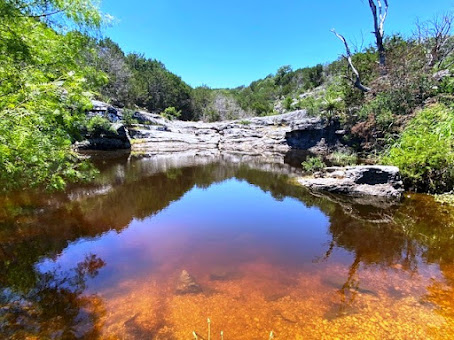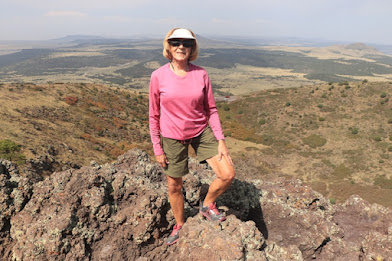Towering rock canyons, more than 350 caves, and two spring-fed creeks make Colorado BendState Park near San Saba, Texas, a fabulous place to explore. With 16 miles of hiking trails, including 14 miles suitable for mountain biking, the park provides plenty of opportunities to enjoy unspoiled nature.
It’s about two hours’ drive from Austin (four hours from Dallas), making this a
doable day trip or weekend getaway (both time and budget wise) if you’re
visiting the Texas Hill Country. If you love the outdoors, the park is a great
discovery filled with lush and scenic river trails and sparkling Gorman
Falls.
If the landscape isn’t enticing enough—and it certainly should be—there
are multiple recreational opportunities. Whether your favorite outdoor
activities include birding, fishing, hiking, picnicking, camping, or
photography, you’ll find plenty to do at Colorado Bend State Park--just be sure to check on availability as long as COVID restrictions are in place.
Located
along six miles of Colorado River frontage, Colorado Bend is a large state
park, covering 5,328 acres. Partly because of its size, the intent is to keep it
natural and easy to care for. Primitive tent camping is
allowed in 38 numbered sites, and there are two backpack areas where guests can
pitch tents. No electricity is available, but when serenity and peacefulness
take over, you won’t miss it. Pets are allowed as long as they are kept on a
leash no longer than six feet.
Hike along the Colorado
River in the park.
Originally
an old Indian camp, the site near Gorman Falls is protected for archeological
study. During the 1950s-1970s that area was a fishing camp and RV park. The
state bought the land in 1984, adding more land from the former Lemons Ranch in
1987. These areas were combined and opened to the public as Colorado Bend State
Park in 1988. Still, only 40,000 visitors per year journey the 18 miles from
San Saba, through the tiny town of Bend, and over gravel roads to reach the
park.
Native
pecans, ferns, and cacti grow abundantly in the park, and wildflowers sprout up
in the spring. Wildlife includes coyotes, bobcats, and mountain lions—although
you probably won’t encounter these species. White-tail deer, armadillos, and
squirrels are more common sights. You might also see wild turkeys, endangered
golden-cheeked warblers, black-capped vireos, red-tailed hawks, and eagles
(they nest on canyon walls).
Several
geological features in the park are unique to this region. Spicewood Springs is
a popular hiking trail with numerous creek crossings that leads to a refreshing
water hole where visitors often come to picnic and swim. Painted rock
formations, colored by different minerals seeping through, add to the beauty of
this spot.
 |
| Springs along the trails add to the natural beauty of the park. |

Gorman Falls is a highlight
of any visit to the park.
This
impressive spring-fed 60-foot-high waterfall, tumbles over a cliff and mists
ferns and other vegetation as it descends. Comprised of travertine, the top
layers of calcium deposits are extremely fragile, so the area is protected.
From the viewing deck, watch the flowing falls and then turn around to see the
Colorado River meandering on the opposite side.
You
can also hike to Gorman Falls on your own, and guided cave tours are available
during non-pandemic times. Outdoor enthusiasts are free to explore more trails and
enjoy the park on its own primitive terms.
 |
| Some trails can be challenging, especially in hot Texas summers. |
March and April are busy months--that’s prime time for white bass fishing and birding (214 species of birds have been identified in the park). Wildflowers start blooming in the spring, and the weather is fine for camping or hiking. There are so many ways to appreciate nature in Colorado Bend State Park that your first visit won’t be your last.
Photos by Larry and Beverly Burmeier























































